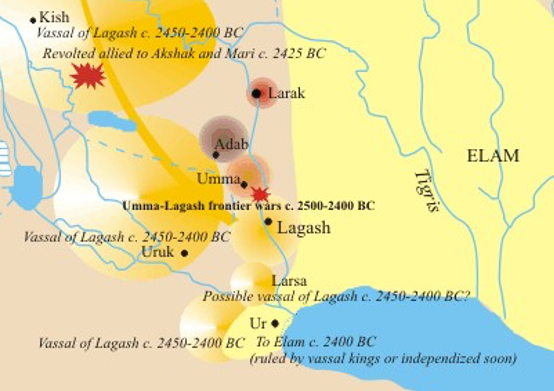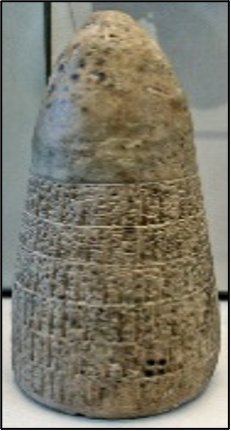Stephanie Guerin-Yodice
Figure 6. Map showing the struggle for power, 2500–2400 BCE. Google Images. CC-BY.
There is evidence that the first conflict over waterways occurred in 2500 BCE between the rulers of Lagash and Umma. Lagash was one of the original established agricultural communities along the Tigris River. Over time, the kings of Lagash (circa 2500–2270 BCE) expanded beyond the walls of the city-state to eventually conquer most of the Sumer region. It was customary for Sumerian kings of the First Dynasty to reduce conquered city-states to tributary states. In this system, authority was primarily decentralized and the rulers within Lagash’s vassal territory maintained substantial autonomy. When the king of Umma, a city-state approximately 35 miles north of Lagash, threatened Lagash’s land and water resources, a series of reappropriations were made in an attempt to settle the border dispute. [1] Epigraphic scientists have translated multiple inscriptions outlining Umma’s transgressions, the interstate conflict with Lagash, and the course of action the kings of Lagash took to reclaim their lands.
See Doing History at the end of the chapter on Inscription from Umma and Lagash
[1]. George A. Barton, “Inscription of Entemena #7,” in The Royal Inscriptions of Sumer and Akkad (New Haven, CT: Yale University, 1929), 61, 63, 65.



